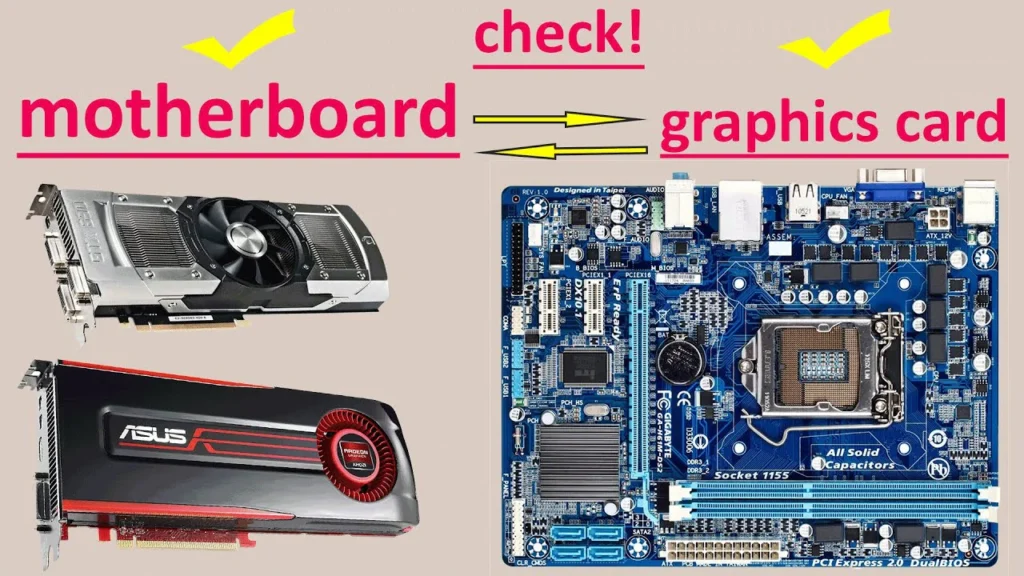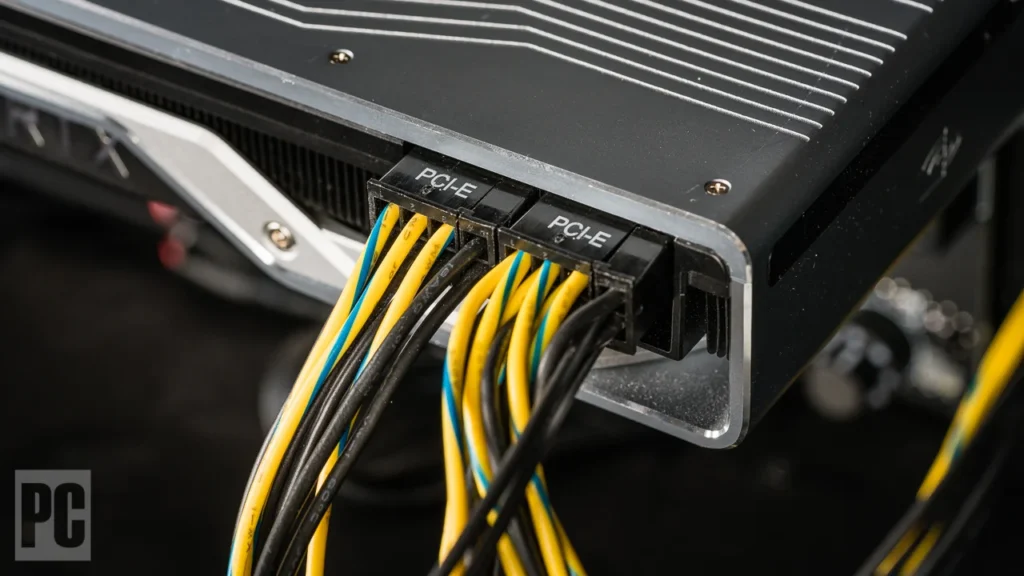Table of Contents
When I upgraded my PC, I was worried that my old motherboard wouldn’t support the new GPU I bought. After some research and trying it out, I was relieved to find that with a few adjustments, they worked together smoothly. It’s worth checking compatibility, but upgrading your GPU on an old motherboard is often possible without major issues!
When upgrading my PC, I worried about compatibility between my old motherboard and a new GPU. After some research and adjustments, they worked together seamlessly. Upgrading a GPU on an older motherboard with the right checks is usually hassle-free!
Stay tuned as we dive deeper into the topic, exploring “Can an Old Motherboard Support a New GPU?” We’ll discuss compatibility tips, potential challenges, and how you can successfully upgrade your system without a hitch!
What Factors Determine If an Old Motherboard Can Support a New GPU?

PCIe Slot Compatibility:
Check if your motherboard has a PCIe x16 slot, which most modern GPUs need. Older motherboards with this slot can usually support newer GPUs.
PCIe Version:
The PCIe version on your motherboard matters. New GPUs work with older PCIe versions, but performance may be slightly lower.
Power Supply:
Ensure your power supply can handle the power needs of the new GPU. Some old motherboards may need a stronger power supply.
BIOS Update:
Sometimes, an older motherboard needs a BIOS update to support a newer GPU. Check your motherboard manufacturer’s website for updates.
Physical Space:
Make sure there’s enough space in your case for the new GPU. Newer GPUs are often larger than older ones.
Can I Install a New GPU on an Older Motherboard Without Upgrading Other Components?
Yes, you can usually install a new GPU on an older motherboard without upgrading other components. Most new GPUs are backward compatible with older PCIe slots, so they will fit and function. However, performance might not be fully optimized if the PCIe version on the motherboard is older than the one the GPU is designed for.
You should also check if your power supply is strong enough to support the new GPU. Some older systems have power supplies that may not handle the higher power demands of modern GPUs. It’s also a good idea to ensure that the motherboard BIOS is up to date for proper GPU support.
Will My Old Motherboard Bottleneck the Performance of a New GPU?
An old motherboard can sometimes bottleneck the performance of a new GPU. If the motherboard has an older PCIe version, the data transfer speed may be slower, which could limit how fast the GPU performs. While the GPU will still work, it might not operate at its full potential due to these limitations.
Other components like the CPU and RAM can also affect performance. If the processor is outdated or the RAM is slow, the system might struggle to keep up with the new GPU. This could cause slower overall performance, even if the GPU is powerful. However, in many cases, the improvement with a new GPU is still noticeable, even with an old motherboard.
Read More: How To Update GPU Drivers – Quick & Easy Guide for Better Performance!
What BIOS Updates Are Needed to Support a New GPU on an Old Motherboard?
To support a new GPU on an old motherboard, you may need to update the BIOS. The BIOS controls how the hardware in your system communicates with each other. If the BIOS is outdated, it might not recognize newer GPUs, causing compatibility issues.
Updating the BIOS can help the motherboard support modern graphics cards. You can check the motherboard manufacturer’s website for BIOS updates. Installing the latest version can improve compatibility and fix any potential bugs. Always be careful when updating the BIOS, as an incorrect update can cause issues with the system.
Do I Need to Upgrade My Power Supply When Installing a New GPU on an Old Motherboard?

- Check GPU Power Requirements: Look at the wattage needed for the new GPU. Most modern GPUs require more power than older models.
- Evaluate Your Current Power Supply: Check the wattage of your existing power supply. It should meet or exceed the requirements of the new GPU
- Consider Additional Connectors: Some GPUs need extra power connectors. Ensure your power supply has the necessary connectors available.
Watch for Efficiency Ratings: A power supply with a higher efficiency rating (like 80 Plus) can provide stable power and better performance.- Replace If Necessary: If your current power supply is not sufficient, consider upgrading to a higher wattage unit for optimal performance
Can a New GPU Damage an Old Motherboard?
Yes, a new GPU can damage an old motherboard, but it is rare. If the GPU needs more power than the motherboard can provide, it might cause problems. Also, if the GPU is not compatible with the motherboard, it could lead to issues. Overheating can also happen if the old motherboard can’t handle the new GPU’s heat. Always check compatibility and power requirements before installing a new GPU.
What Are the Signs That My Old Motherboard Isn’t Compatible with a New GPU?
Lack of PCIe Slot:
If your motherboard doesn’t have a compatible PCIe x16 slot, it won’t support most modern GPUs. Check the motherboard specifications to see if it has the necessary slot.
Insufficient Power Supply Connectors
Many new GPUs require additional power connectors (like 6-pin or 8-pin). If your motherboard lacks the necessary connectors or your power supply isn’t adequate, compatibility may be an issue.
BIOS Version Issues:
Older motherboards might need a BIOS update to support new hardware. If your motherboard’s BIOS is outdated, it could prevent the GPU from functioning properly.
Inadequate Chipset Support:
Some newer GPUs may require specific chipset features that older motherboards lack. Verify whether your motherboard’s chipset supports the GPU you intend to install.
Size and Form Factor Constraints:
Modern GPUs can be quite large. If your motherboard is in a compact case or designed for smaller form factors, there may not be enough physical space for the new GPU.
Read more: Red Light On GPU When Pc Is Off – Complete Guide 2024
Are There Any Adapters or Modifications Needed for an Old Motherboard to Support a New GPU?
If you have an old motherboard and want to use a new GPU, there are a few adapters and modifications you might need. One common solution is a PCIe adapter. This device can help connect a new GPU to older motherboards that might not have the right slots. However, keep in mind that using adapters can sometimes lead to performance issues, so it’s important to choose a quality product.
Another option is upgrading the power supply. Many new GPUs require more power than older systems can provide. You might need a power supply with additional connectors or a higher wattage to support the new GPU. Sometimes, a BIOS update can also help with compatibility, allowing the motherboard to recognize the new hardware. Always check the specifications and do a little research to see what’s best for your setup!
How Can I Check if My Old Motherboard Is Compatible with the Latest GPUs?
To check if your old motherboard is compatible with the latest GPUs, start by looking for a PCIe x16 slot on your motherboard, as this is essential for most new graphics cards. Next, find out the power requirements for the GPU you want to use and make sure your power supply can provide enough wattage and has the necessary connectors, like 6-pin or 8-pin.
It’s also a good idea to visit the motherboard manufacturer’s website to see if there are any BIOS updates available, as these can improve compatibility with new hardware. By checking these factors, you can determine if your old motherboard can support a new GPU.
Frequently Asked Questions:
1. Can I Use a New GPU Without Upgrading My RAM?
Yes, you can use a new GPU without upgrading your RAM, but older RAM may limit the GPU’s performance.
2. What Happens if I Install a GPU Not Supported by My Motherboard?
The system may fail to boot or the GPU might not be recognized, leading to instability or crashes.
3. How Do I Know What PCIe Version My Motherboard Supports?
Check the specifications in the user manual or on the manufacturer’s website to find the PCIe version.
4. Can I Mix Different Brands of GPUs and Motherboards?
Yes, as long as the GPU fits the PCIe slot and power requirements are met, brand mixing is fine.
5. What Are the Risks of Using Adapters for Compatibility?
Adapters can reduce performance, cause instability, or even damage components if they are low quality.
6. Will My Computer Need a Cooling Upgrade With a New GPU?
A new GPU often generates more heat, so you may need to upgrade your cooling system to prevent overheating.
7. How Can I Tell If My GPU Is Performing Well with My Old Motherboard?
Use benchmarking software to monitor frame rates and temperatures, and compare them to your GPU’s expected performance.
Conclusion:
In conclusion, upgrading a new GPU on an old motherboard is often possible with some careful checks. Ensure you have the right PCIe slot, adequate power supply, and any necessary BIOS updates. While there may be some limitations, like potential bottlenecks, many users still see significant performance improvements. With the right preparations, you can enjoy your new GPU without major issues!
.
